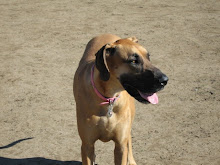We all hate to leave our pets behind if we go on vacation or have to leave home for a few days. However, we can't always take them with us so if you don't have family or friends that are able to take care of them you most likely need a dog kennel.
To find a good kennel ask for recommendations from friends, family, your veterinarian or grooming shops.
You should then visit the kennel and look for these things.
License
Staff - are they friendly, knowledgeable, seem to care about the dogs there?
Sanitation - Are the runs clean? Do they look like they have an effective system? Do they have barriers high enough to prevent male dogs from urinating into adjacent runs?
Facility - Is it in good repair, neat, clean, smell clean and clear of debris?
Exercise area - Do dogs have freedom of movement? It the floor concrete so it can be easily disinfected? How much time do they get outdoors?
Climate - Is there proper temperature control and is ventilation good with no draughts?
Sleeping area - Is there clean, dry and large enough for a dog to stand, stretch out or turn around? Do they have solid dividers between kennels? Is the bedding clean?
Cages and gates - Are they secure and in good repair?
How many dogs in facility - Are there to many?
Food - You may want to bring food that your dog is already eating if they don't have it. You don't want him to get sick from a change in diet.
Water - Is it available at all times, does the water look clean in the dog bowls and are the dog bowls clean?
Veterinarian - Do they have a vet on call? Will they contact your vet if needed?
Find out the cost, drop off time and pick up. How far in advance should you book?
When you do take your dog for his stay take along:
Vaccinations records
Emergency contacts - veterinarian and your numbers.
Pet schedule - also pet medications with instructions.
Take something from home like a blanket or toy.
Food if needed
Usually if a dog is introduced early in life to kennels be doesn't have a problem. Of course all dogs are different and it's hard to predict how they will react. You should start with a weekend to see how he does. Ask the staff how his behavior and appetite were so you can judge how it went. Of course check his general condition and grooming to see how well he was taken care of.
If they do have trouble maybe next time you should look into a bonded pet-sitting service. Maybe you know someone who does pet sitting in your home. Check out your options.
Lastly, ask your veterinarian if your dog needs kennel cough intra-nasal vaccination.
About The Author Sandy Oberreuter has a web site on small dog breeds with articles on popular small dogs, dogs good with children and seniors, breeders, dog diseases, dog day care, hypoallergenic dogs and more.
View their website at:
http://www.small-dogbreeds.comdog collars,
dog toys,
dog beds,
pet supplies,
dog health





